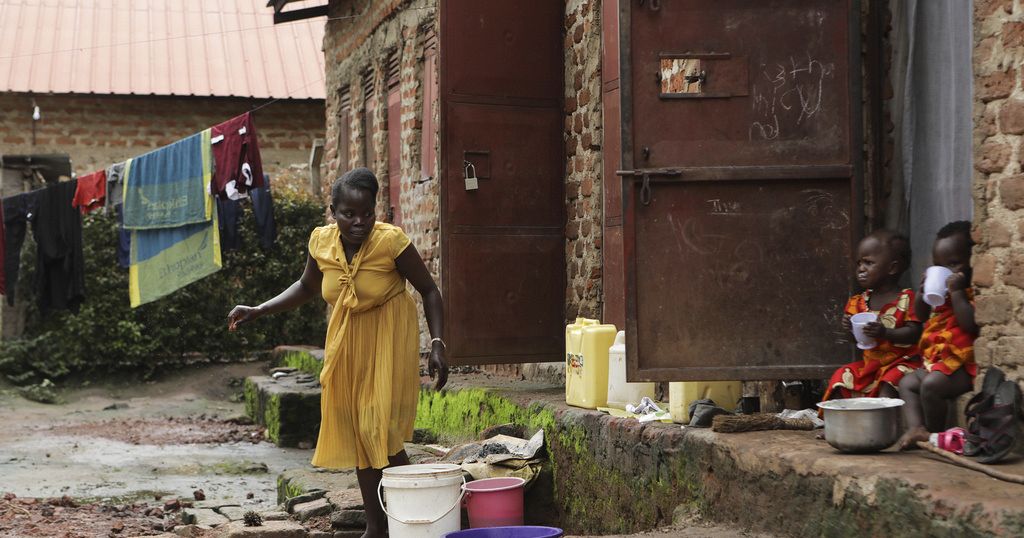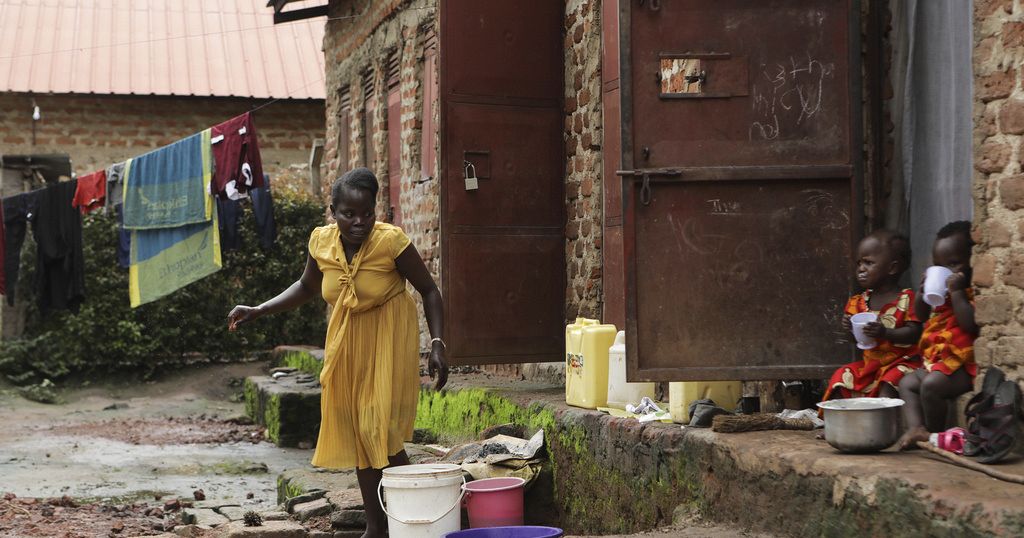
There can be lifelong challenges for people with sickle cell disease in rural Uganda, where it remains poorly understood.
In one of the hotspots for sickle cell in the east of the country, a young woman living with the disease is ramping up efforts to educate and counsel communities about the disease.
Barbara Nabulo, now 37, was diagnosed with the inherited blood disorder when she was just two weeks old.
“They never thought of me as important, like someone who would grow up or someone who is supposed to get an education. Because they used to tell my mother that people like me don’t grow, we can’t go to school, and we don’t produce children,” she says.
Her mother looked after her, taking her to the local hospital, until she was 12 years old. When she reached that age, she would put Barbara in a taxi from their village and tell her to go to the clinic on her own.
The group of sickle cell disorders causes the normally round red blood cells to become hard and crescent shaped, clogging the flow of blood.
This often leads to infections, excruciating pain, organ damage, stunting, and other complications. The only cure for the pain is a bone marrow transplant or gene therapy that is beyond the reach of most patients.
The disease is not a public health priority in Uganda, despite the burden it places on communities, and funding for treatment often comes from donor organisations.
According to the Ugandan Ministry of Health, approximately 20,000 babies are born with sickle cell disease in the country each year.
At the Mbale Regional Referral Hospital, Barbara chats to medical staff before proceeding to a ward housing sickle cell patients.
She spends time talking to both the caregivers and patients, mostly children, who have been rushed here for medical emergencies after a sickle cell crisis.
In the hospital’s crowded spaces, Barbara tells them about her survival and how they can survive too.
Her childhood was marked by bouts of severe illness and lack of understanding amongst family members. Her lack of formal education is hurtful for her and a source of shame for her parents, who repeatedly apologise for letting her drop out while her siblings studied.
Her mother, Agatha Nambuya, remembers her daughter’s head and limbs swelling up just two weeks after her birth.
“These children, they used to die so soon. By the way, you have to work so hard all the time, you have to look at her,” she says.
But now she knows of children with sickle cell disease who grew to become doctors or whatever they want to be.
Encouraged by hospital authorities, Barbara makes weekly visits to the ward that has many children watched over by exhausted-looking parents.
Together with health workers, they urge openness and the testing of children for sickle cell as early as possible.
Dr Julian Abeso, the head paediatrics at the hospital and a researcher on the disease, says there is a drug, hydroxyurea, that can reduce periods of severe pain and other complications from the disease.
“On average most of these children will start falling sick between the ages of six to eight months. So, by the time the child reaches say 10, they will have been admitted several times if we do not give some of these preventive drugs,” she says.
“I would say it is a wonder drug, because it has changed the course of managing children with sickle cell. It improves the quality of life of these patients.”
She says messages of hope from people like Nabulo help those who feel discouraged or worry that sickle cell is a death sentence, and that recent efforts to promote understanding of disease has increased the number of people seeking help from the hospital.
“Previously, families would have a child with sickle cell and they wouldn’t even bring them to hospital because they thought that child would die and in the process,” she says.
Barbara’s parents say they are proud of her role as a counsellor at the hospital.
“When Barbara was born, if someone had sickle cell, people looked at her as being sickly like that. But I think people are getting some little light (understanding),” says her father, Michael Kiboya.
Barbara is now a mother to twin daughters and a son, but despite positive trends being registered at the hospital in the fight against the, many people like Nabulo, continue to face discrimination.
Global estimates of how many people have the disease vary, but some researchers put the figure at between six and eight million, with more than five million of them living in sub-Saharan Africa.
Read More: World News | Entertainment News | Celeb News
African News





